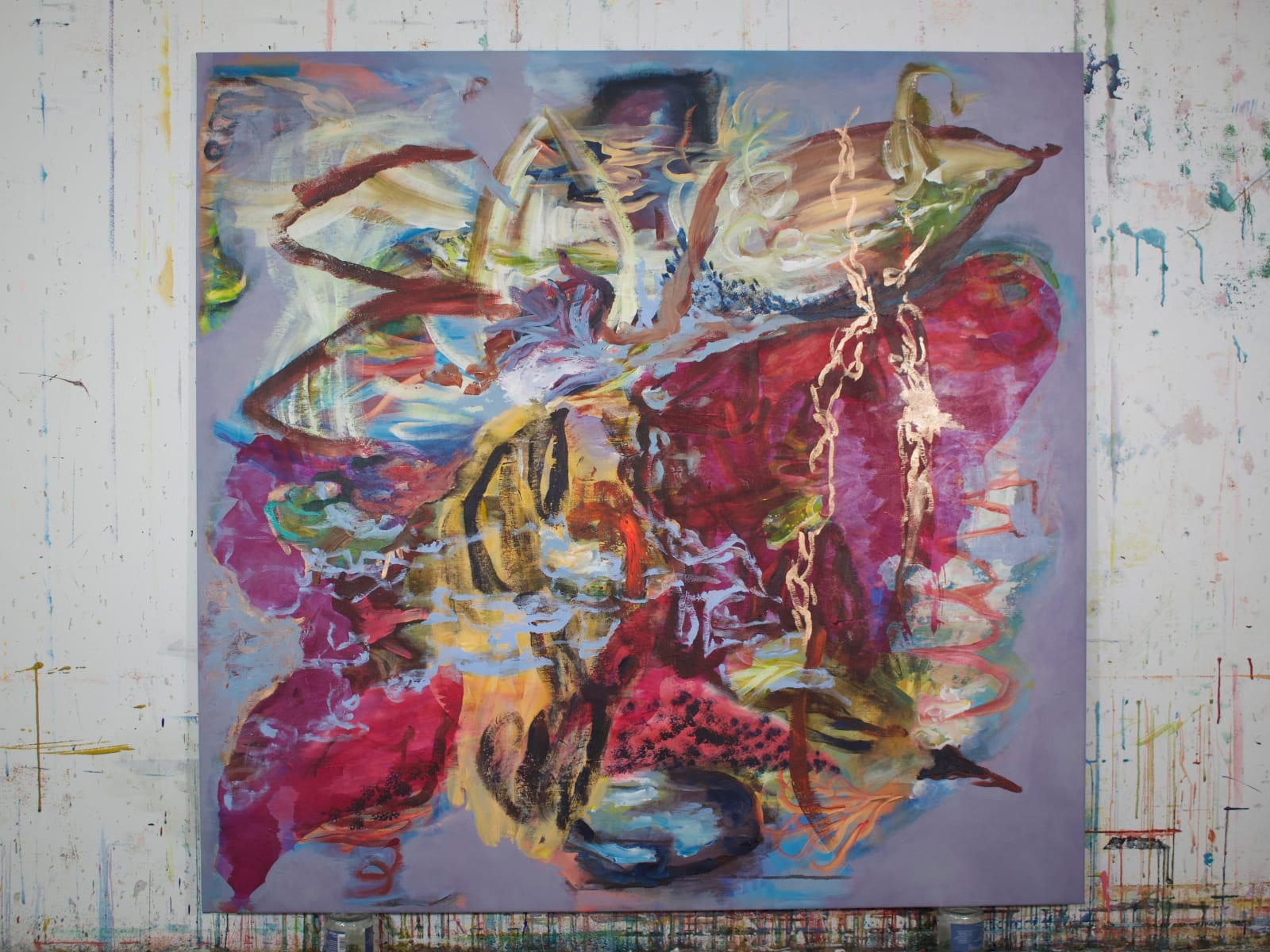-
Hannes Schauer, Deach, 2024%3Cspan%20class%3D%26%2334%3Bartist%26%2334%3B%3E%3Cstrong%3EHannes%20Schauer%3C/strong%3E%3C/span%3E%2C%20%3Cspan%20class%3D%26%2334%3Btitle%26%2334%3B%3E%3Cem%3EDeach%3C/em%3E%2C%202024%3C/span%3E
-
 Artists
ArtistsLiminal
‘Liminal’ refers to spaces where reality feels transitional, often detached from the existing social order. Hannes envisions a symbolic space outside the established world, allowing irrational behaviours beyond known concepts of space and time.
This transitional place, where everything is possible and limitless, mirrors Hannes's studio in both the physical and metaphysical aspect. His work investigates the multifaceted dimensions of nature, extended beyond its realm, in order for us to synchronise internally with nature.
Acknowledging the challenges of comprehending both the world and ourselves, Hannes’ aesthetic aids us to navigate our interactions with nature, as well as each other, with the intention to reduce pain and suffering for all sentient beings.
-

 Liminal spaces are transitional places for people who have detached themselves from the existing social order but have not yet arrived in a new order. Originally, this term described a social space, not a physical one. A symbolic space outside the established world. The great outside, beyond known concepts of space and time. A space that allows for the enactment of irrational behaviors. A transitional or threshold space where everything is possible, but nothing is defined by rules. Very much like my studio where I spend most of my time - the physical aspect - and also my mind - the metaphysical aspect.
Liminal spaces are transitional places for people who have detached themselves from the existing social order but have not yet arrived in a new order. Originally, this term described a social space, not a physical one. A symbolic space outside the established world. The great outside, beyond known concepts of space and time. A space that allows for the enactment of irrational behaviors. A transitional or threshold space where everything is possible, but nothing is defined by rules. Very much like my studio where I spend most of my time - the physical aspect - and also my mind - the metaphysical aspect.
It is a place where one doesn't arrive, not fully. Also very much like my artistic approach. I can never allow myself as an artist to fully arrive. In the pop culture definition, these are physical spaces that are simultaneously disturbing and familiar. Foucault coined the term "Heterotopien". These are places where people break with their conventional time such as prisons, psychiatric hospitals, nursing homes, but also cinemas, theatres, cemeteries etc. He calls these spaces "Des Espaces Autres". Places that are simultaneously inside and outside of society. Thus, liminal spaces, like "Heterotopian" are places where we perceive the world differently. A microcosm, a society within a society, that follows different rules than the surrounding outer space.
I worked with people on the fringes of society. In prisons as a yoga teacher and with neurodivergent children and adolescents as a psychological advisor before I became a professional artist.
The liminal space allows for a so-called magical view of the world. The pandemic played an important role in this - like I mentioned in the beginning. Empty streets and public spaces encouraged and enabled us to connect with this strangely yet familiar emptiness within ourselves - at least that is what happened to me.
We still find ourselves in this threshold state today, a symbolic space between the "Before" of 2019 and the "After" that continues to unfold. -
liminal
adjective | lim·i·nal ˈli-mə-nᵊl1: of, relating to, or situated at a sensory threshold : barely perceptible or capable of eliciting a response
liminal visual stimuli
2: of, relating to, or being an intermediate state, phase, or condition : IN-BETWEEN, TRANSITIONAL
… in the liminal state between life and death.
—Deborah Jowitt
Hannes Schauer | Liminal: London
-

-
-
liminal
adjective | lim·i·nal ˈli-mə-nᵊl1: of, relating to, or situated at a sensory threshold : barely perceptible or capable of eliciting a response
liminal visual stimuli
2: of, relating to, or being an intermediate state, phase, or condition : IN-BETWEEN, TRANSITIONAL
… in the liminal state between life and death.
—Deborah Jowitt





